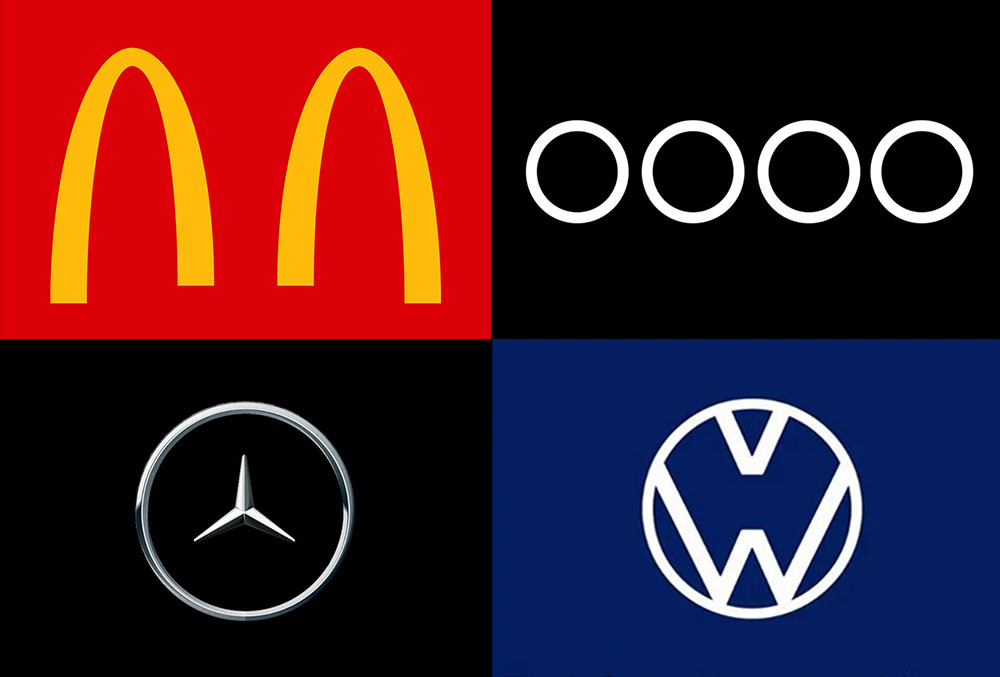Only a few months ago, the phrase “social distancing” was not part of daily conversations. Yet, in the context of the current COVID-19 crisis, it is a commonly-cited phrase as one of the most well-known measures introduced to limit the spread of the coronavirus. In true branding form, no shortage of companies have responded to global mandates for social distancing in their own ways; beyond closing brick-and-mortar outlets and focusing primarily on e-commerce, many brands have looked to stay relevant in these strange times, and this has included temporarily adapting or modifying their trademarks and logos to reinforce the importance of complying with the health guidelines.
Look no further than Italian sportswear brand Kappa, which has modified its famed “Omini” logo by adding some space between the silhouette of a man and woman leaning against each another. In a similar effort, Audi has separated its logo, which typically features four interlocked rings. The same way, McDonald’s has cut its well-known golden arches in half, while Mercedes’ star emblem logo now features a star disconnected from the surrounding circle.
Although the changes are subtle, they work precisely because of the instant recognition that these world-renowned trademarks enjoy. The public knows exactly what has been changed and they understand the message that these companies are trying to send.
From a marketing point of view, this practice of event-specific logo tweaking is relatively common, and is not coming to light for the first time in connection with COVID-19. As Cresco attorneys Frances Caudron, Pauline Geentjens and Olivier Van Raemdonck aptly note, Lacoste has, on more than one occasion, “temporarily replaced its signature crocodile logo with the images of endangered species to help raise awareness about the threat of extinction.” As part of a partnership with the International Union for Conservation of Nature, the French fashion brand has put emblems of species of whales, seals, owls, frogs, and other animals on limited edition polo shirts.
For its headline-making collaboration with Supreme in 2017, Louis Vuitton reworked its instantly-identifiable Toile Monogram print, including the streetwear brand’s box logo in the mix on garments and accessories, as well as skatedecks. Thereafter, Ikea made a minor tweak the appearance of its stylized name – as depicted in the signage of one of its store in the United Kingdom – to coincide with the launch of its highly-anticipated collaboration with Virgil Abloh. The temporary change? The addition of a pair of quotation marks around the word Ikea, a nod to Abloh’s widespread use of quotations marks.

Still yet, “Since its launch in 1998, Google frequently adopts redesigned versions of its logos to mark national holidays or significant anniversaries,” according to Caudron, Geentjens and Raemdonck.
Such temporary changes tend to grab the attention of the media – and the public – and thereby, enable the brands at play to maintain something of a fresh and innovative brand identity. But not merely a marketing play, this strategy also has a place in the law, and it is known as “fluid marks” or “mutating marks.”
As the name suggests, fluid trademarks are ones that may change over time, while typically retaining certain features of the underlying mark. “In that regard, the fluid mark concept contradicts traditional trademark principles, which historically have relied on static, unchanging words and symbols with which consumers develop a familiarity over time,” Latham & Watkins LLP’s Perry Viscounty, Jennifer Barry and David Hazlehurst assert. Such consistent, unchanging use of a trademark – whether that be a stylized brand name or logo, for example – has enabled consumers to build a long-term association between a given mark and the producer or service provider that a mark represents.
In light of “the continuing evolution of information technology, and the corresponding opportunities for novel branding and marketing approaches,” fluid marks “embrace consumer engagement through dynamic, attention-grabbing brand refreshment and temporarily changing source identification.” But brands looking to jump on this bandwagon should do so with caution, particularly if the marks at issue do not already enjoy strong levels of consumer recognition.
As a rule of thumb, Caudron, Geentjens and Raemdonck suggest that trademark holders bear in mind that “the repeated use of different variations of their underlying trademark may cause consumer confusion, which defeats the essential purpose of a trademark: to signal the origin of products and services.” As such, they note that “responding in a quirky manner to events by altering your trademark” is not a necessarily a bad idea “if it is done in moderation.”














